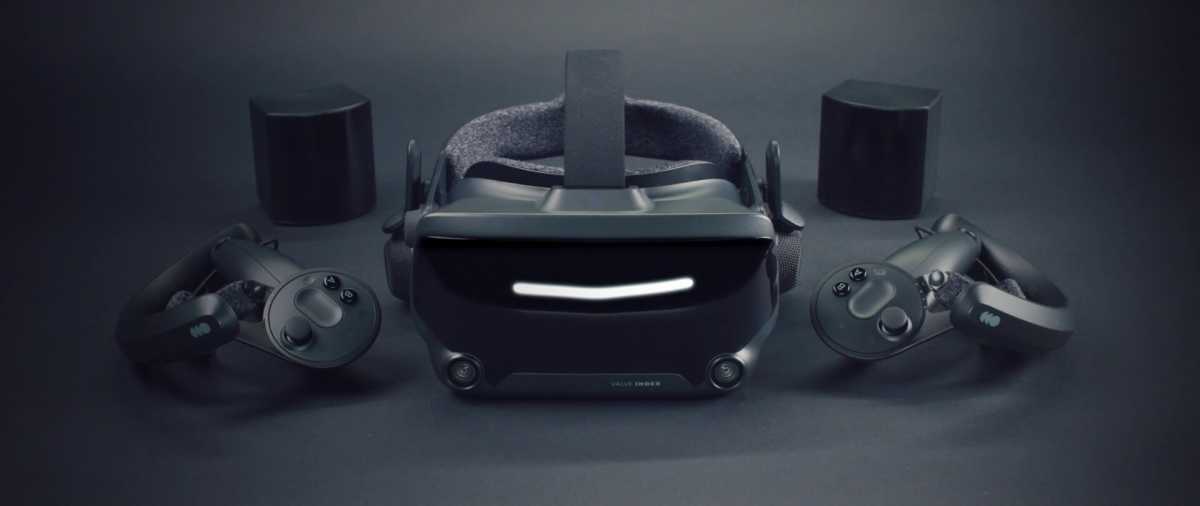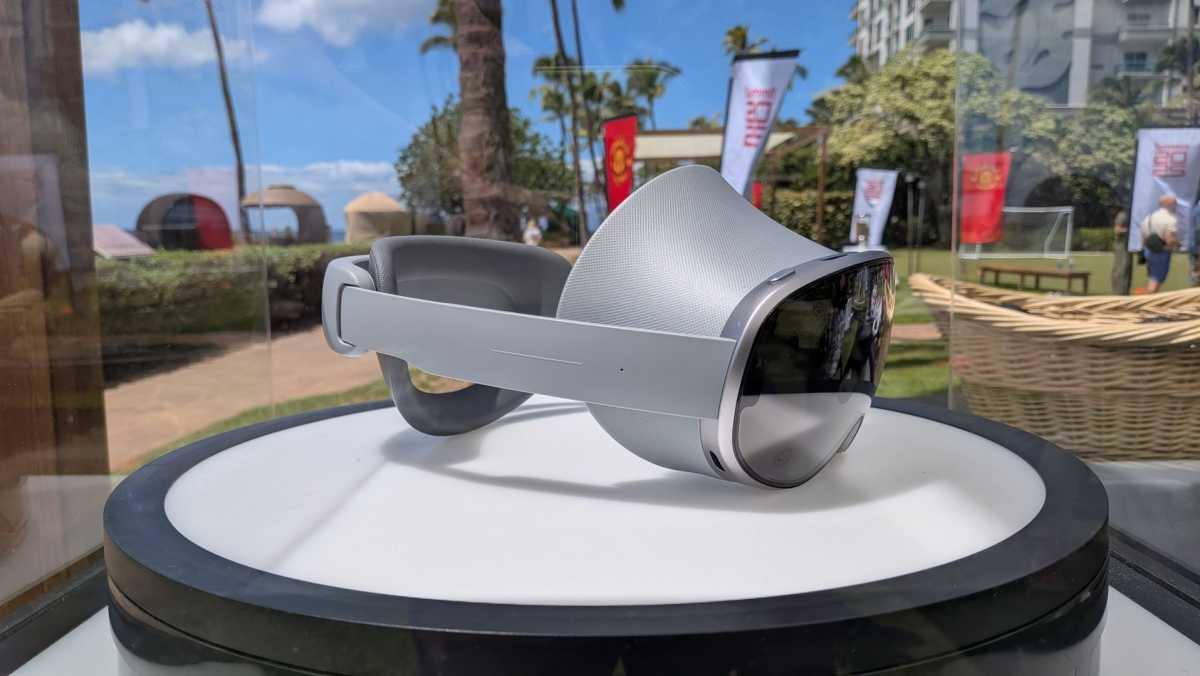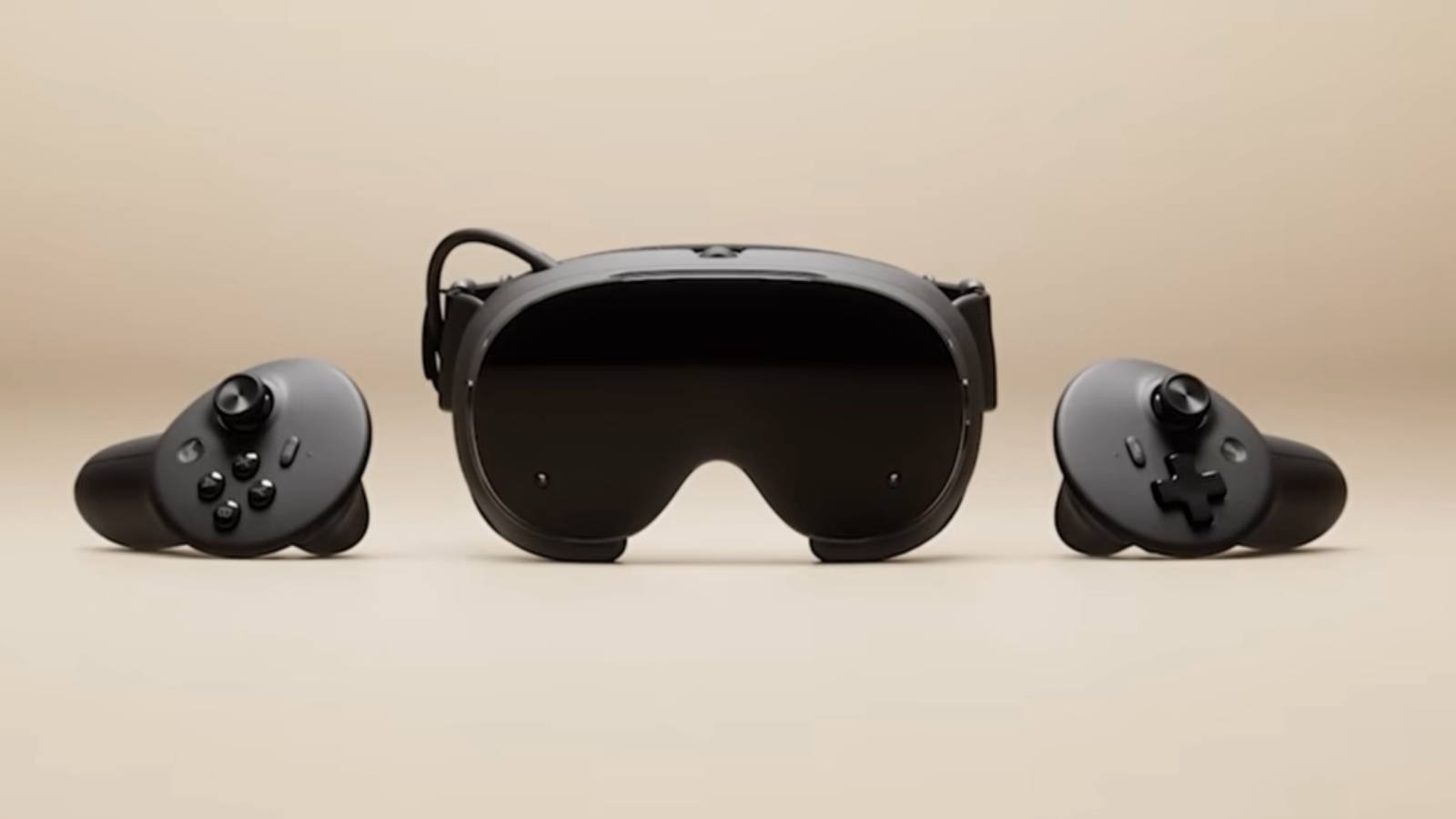The Apple Vision Pro is an expensive flop. I haven’t heard anyone mention the Meta Quest in months, despite it getting a new model just last year. I can’t even remember the name of Samsung’s incoming Android-based headset. While virtual reality gamers remain passionate, the excitement around the format seems to be slowly dying… again.
And then along came Zeus Valve. Easily the least mainstream of its three — THREE! — hardware announcements yesterday, the Steam Frame is everything I was hoping for. It’s a standalone, self-powered headset with its own software and apps, a la the Quest. With an internal battery, it’s ready to go on the road or just roam around your home without being tethered.
But it can also connect to a gaming PC or a Steam Deck or a Steam Machine (what’s the difference?) to access more powerful virtual reality games and non-VR media. And Valve is setting this up as a central feature, with a low-latency wireless dongle included in the box.
It’s packing the latest VR tech such as eye tracking, pancake lenses, and expansion options for MicroSD and USB-C. It’ll be running on a powerful Snapdragon ARM64 processor, and the software is at least some flavor of SteamOS, giving it immediate access to a huge amount of both VR and standard games.
This is big, and I say that as someone who’s very invested in VR gaming. The Frame is checking very nearly all the boxes that a VR headset needs to be a smash hit with consumers. And perhaps, most crucially, it’s coming with something gamers already know that they want: Steam itself. For all the billions that both Apple and Meta have invested into their VR platforms, they’ve yet to make a case to most users that these devices are anything more than novelty.
Remember when Apple was trying to convince us that haunting digital eyes on an external screen wasn’t incredibly creepy? That was just two years ago. Maybe I’m projecting, but Valve’s promotional video for the Frame might just have a nod to that, when an older lady lifts the headset up to see the viewer and give a cheeky smile.
Ten years of work in VR gaming
Valve doesn’t need to pretend that the Frame is anything beyond a game machine, a frame — oh, I see what they did there — through which you can access all the stuff that’s already on Steam and where the most fleshed-out VR games already live. You could be forgiven for forgetting that Valve, along with partners like HTC and to a lesser extent Oculus, has been building a niche but solid foundation for virtual reality software for over a decade.

Valve
Various flavors of VR headsets never really landed before, even with Steam as an access point. But you could say the same for Steam Machines, which floundered with an approach that focused on retail sales and OEM partnerships, and the original Steam Controller. Now with a decade of experience and perspective, not to mention the runaway success of Steam as the de facto platform for PC gaming and the Steam Deck redefining an entire form factor, it’s easy to see why Valve might have a little pep in its step.
Valve needs two more elements to make this thing a hit. One, a killer app. Something with a little more mass market appeal than, say, Half-Life Alyx, a somewhat experimental side-entry into a franchise best known for being in hibernation for almost two decades. (Incidentally, Alyx will probably be six years old by the time the Steam Frame gets into consumers’ hands, and on their faces.)

steampowered.com
It needs something like Astro’s Playroom VR or Astro Bot on the PS5, an appealing tour of everything you can do with VR hardware. Preferably free with the purchase, and with some of that Valve developer soul that’s so hard to find since it basically became a storefront that only drops a new title once or twice a decade.
Incidentally, after the hardware announcements Valve said that it’s not currently working on a first-party VR game. Oh dear.
The price is pivotal
And the second thing it needs is the one thing that was missing from all of the new Steam hardware announcements: a good price. That’s the one that I’m most concerned about. Samsung’s headset, the Galaxy XR (there, I looked it up) comes with similar specifications, a Snapdragon-based chip with 16GB of RAM and 256GB of storage on the base model.
The Galaxy XR is $1,800. That’ll cause barely any less sticker shock than the $3,500 Apple Vision Pro, and will certainly shut down interest from gamers who are only tentatively interested in checking out VR gaming.

Chris Martin / Foundry
It can’t have escaped Valve’s notice that the Meta Quest series, which at one point cost as little as $200, remains the most popular way to play PC-based VR games. I know it can’t, because Valve told me that statistic itself in its latest hardware survey. The Quest 2 and Quest 3 still make up over half of the Steam VR player base, even though they have to jump through a few hoops to use it for PC VR gaming.
I’m not saying that the Steam Frame needs to cost $200 to be a success. But Valve certainly understands that a low entry point is essential. That’s part of the formula for the Steam Deck’s top spot above an admittedly small heap of PC gaming handhelds. And if Valve is smart, it’ll price the new Steam Machine 2.0 at as small a price as possible, both to compete with the PlayStation and (I suppose, technically) the Xbox and to keep people engaged with the money-printing Steam platform.

Valve
So knowing all this, something below $500 would make the Frame an instant buy for me and I might dare to hope for lots of other gamers. I’ll have to wait and see… but with a prospective launch date of “early 2026,” I may not have to wait too long.
This articles is written by : Nermeen Nabil Khear Abdelmalak
All rights reserved to : USAGOLDMIES . www.usagoldmines.com
You can Enjoy surfing our website categories and read more content in many fields you may like .
Why USAGoldMines ?
USAGoldMines is a comprehensive website offering the latest in financial, crypto, and technical news. With specialized sections for each category, it provides readers with up-to-date market insights, investment trends, and technological advancements, making it a valuable resource for investors and enthusiasts in the fast-paced financial world.
